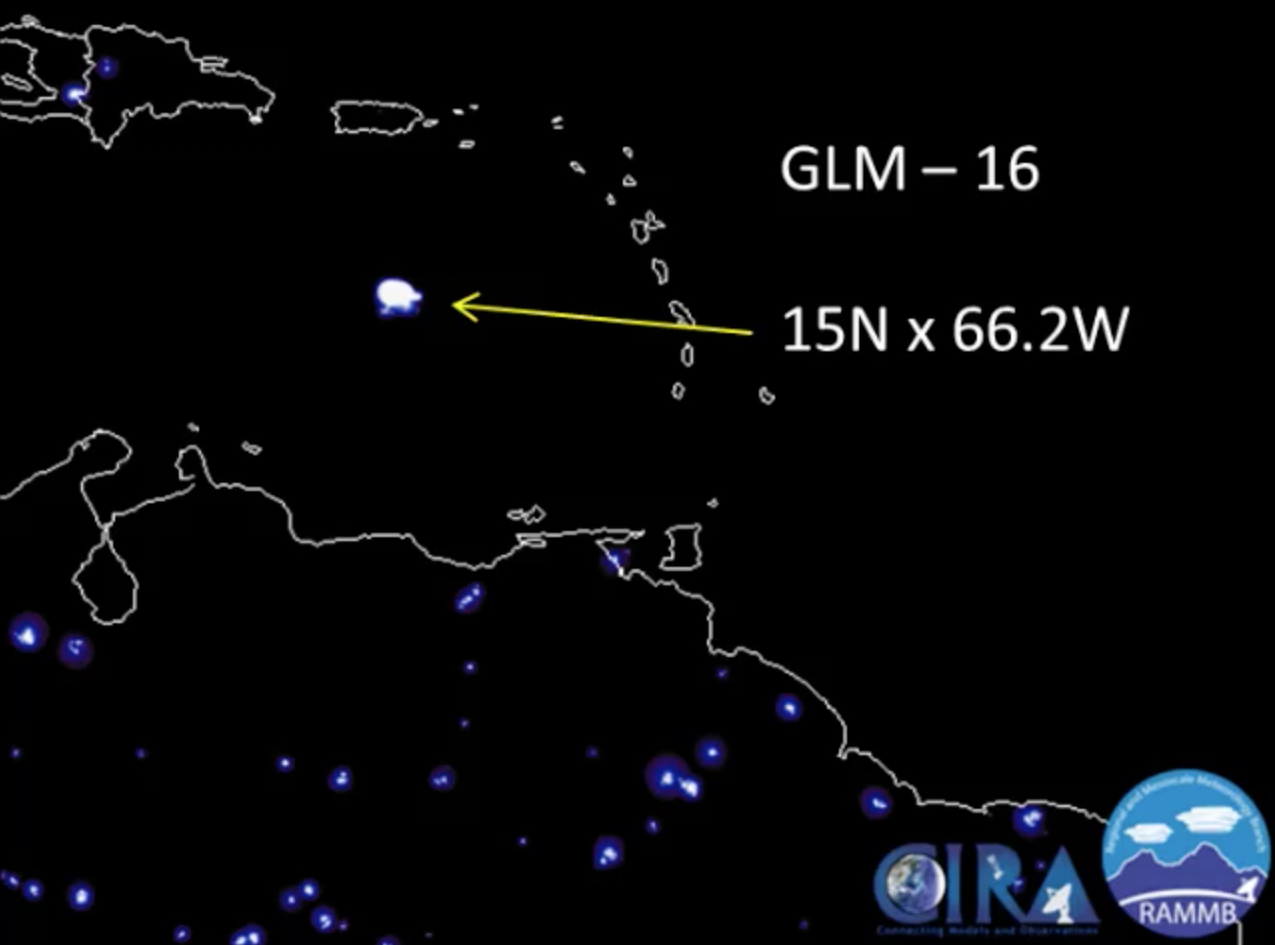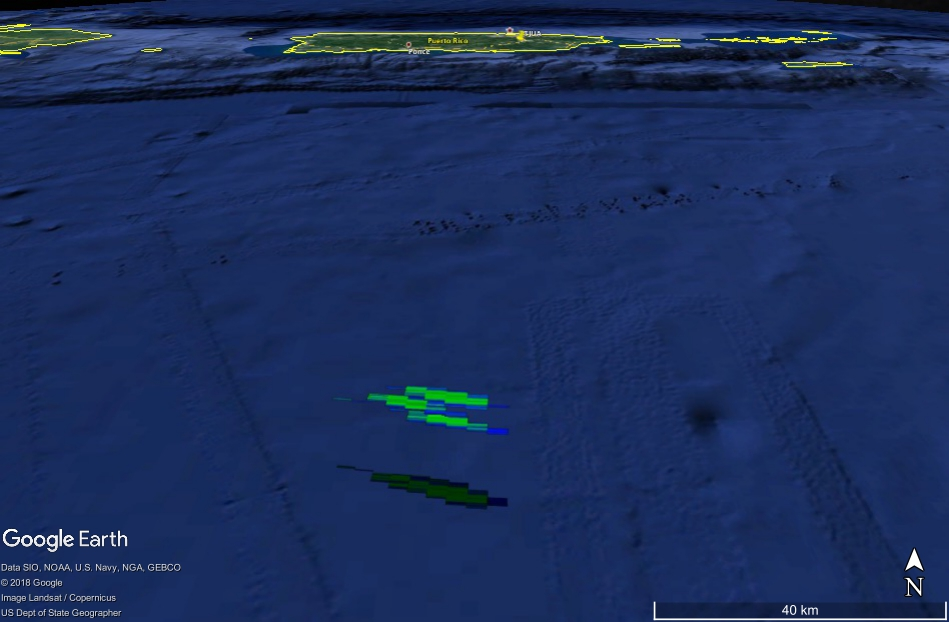DATE/TIME6/22/2019 @ 21:24:45 UTC6/22/2019
|
LAT/LONG14.998267 • -66.336777
14.998267
|

This event was a probable meteorite fall and extraordinarily powerful bolide (airborne fireball) that occurred on 22 June 2019 at 21:24:45 UTC. The event occurred over the Caribbean Ocean due south of Puerto Rico, into waters that are approximately 4.8 km deep. Events are recorded as “probable” if they produce well-defined signatures of a meteorite fall in weather radar imagery at the time and place described by eyewitnesses, but no meteorites have been recovered from the event to date. The fireball has not been reported by direct eyewitnesses due to its relatively remote location. However, the bolide was detected by the Geostationary Lightning Mapper (GLM) instrument on the GOES 16 weather satellite. Department of Defense satellites also report this event (https://cneos.jpl.nasa.gov/fireballs/) and calculate a total power of 6 kTons of TNT equivalent. A global infrasound network operated by the Preparatory Committee for the Comprehensive Nuclear Test Ban Treaty (CNTBT) also recorded this bolide and reports a total power of 5 kTons TNT equivalent. This event is the third most powerful bolide recorded in the vicinity of North America since the DoD satellite network began reporting bolides in 1988.
Meteorites have not been recovered from this event to date. This event is not recorded by the American Meteor Society as there are no direct eyewitness reports.
In data from the NEXRAD weather radar network operated by NOAA, the TJUA (San Juan, Puerto Rice) radar record signatures of falling meteorites. The first appearance of falling meteorites on radar occurs at 21:26:15 UTC and 10.6 km above sea level (ASL) in the 21:25 UTC data set in the 0.48 degree elevation radar sweep. Signatures consistent with falling meteorites appear in a total of four radar sweeps, with a final signature appearing at 21:30:07 UTC. This event occurred at extreme range from the radar (348 km) and radar image artifacts occur nearby in the imagery, but the features identified here as a meteorite fall occur at the location specified by GLM data, are linear in appearance like signatures of other meteorite falls, and only appear for a short period after the event time.
All meteorites from this event are on the seafloor at a depth of approximately 4.8 km.
